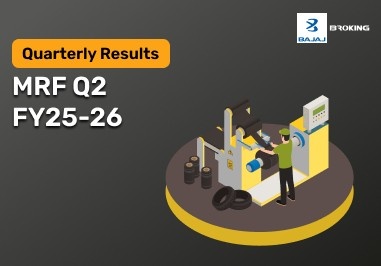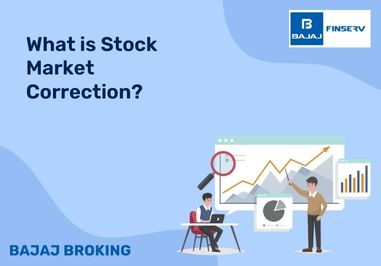Transitioning from a privately held entity to a publicly listed company through an Initial Public Offering (IPO) is a major strategic shift. It allows businesses to tap into wider capital markets and increase institutional participation, often unlocking significant growth opportunities. However, this change is not without its challenges. Companies that go public must navigate a complex regulatory landscape, disclose sensitive financial data regularly, and manage heightened scrutiny from investors and analysts alike. The shift also requires cultural and operational adjustments as firms move from private governance to being accountable to public shareholders. For promoters and founding teams, it can result in partial or full dilution of control, depending on how equity is distributed post-IPO. While there are notable advantages of going public to a company, such as liquidity, improved valuation, and credibility, the costs and commitments are substantial. Understanding the pros & cons of the company going public is therefore essential for any enterprise considering this path.
Advantages of Going Public
Access to Capital: One of the key advantages of going public to a company is gaining access to a large pool of capital through public markets. Companies can raise funds by issuing equity, which can be used for capacity expansion, new project development, or debt restructuring. This route is often more flexible than traditional debt financing or private equity.
Improved Public Image: Listing on a recognised stock exchange can enhance a company’s visibility and brand recognition. With increased media coverage and analyst attention, public companies enjoy a higher degree of credibility, often aiding business development and customer acquisition.
Liquidity for Investors: Going public provides liquidity to early-stage investors, venture capitalists, and employees holding equity. This flexibility enhances investor confidence and offers partial or full exits through secondary market transactions.
Acquisition & Expansion Leverage: Publicly listed equity can be used as a currency for acquisitions, enabling inorganic growth. It also supports the company’s ability to raise additional capital in the future at potentially better valuations.
Talent Retention and Stock Incentives: Offering stock-based incentives becomes more attractive post-listing, which improves employee morale and helps retain skilled talent.
When evaluating the pros & cons of the company going public, these structural benefits can significantly strengthen a company’s financial and strategic position in competitive markets.
Disadvantages of Going Public
Regulatory Compliance: Public companies are subject to stringent regulatory requirements, including regular financial disclosures and adherence to corporate governance standards. Compliance with these regulations can be time-consuming and costly.
Market Pressures: The need to meet quarterly earnings expectations can lead to short-term decision-making, potentially at the expense of long-term strategy. Management may feel compelled to focus on immediate financial performance to satisfy investors.
Loss of Control: Founders may experience diluted ownership and influence as new shareholders gain voting rights. This shift can lead to changes in company direction that may not align with the original vision.
Increased Costs: The IPO process and ongoing public company obligations entail significant expenses, including underwriting fees, legal costs, and compliance expenditures. These costs can be a financial burden, especially for smaller companies.
Public Scrutiny: Operational decisions and financial performance are subject to public and investor scrutiny, which can impact company reputation and management autonomy. Negative publicity or analyst reports can affect stock prices and stakeholder confidence.
In conclusion, while the advantages of going public to a company can be substantial, they come with corresponding challenges. The pros & cons of company going public need weighing carefully to determine if an IPO aligns with strategic objectives and operational readiness.
Examples of Company Going Public
Several companies have recently transitioned to public ownership through Initial Public Offerings (IPOs), and this illustrates the diversity of the motivations and outcomes associated with such a move. The following examples shed light on the pros & cons of company going public and highlight some of the advantages of going public to a company.
Swiggy: In November 2024, food delivery platform Swiggy launched its IPO at ₹390 per share, achieving a valuation of $11.3 billion. The IPO was oversubscribed 3.6 times, indicating strong investor interest. This move provided Swiggy with significant capital to expand its services and enhance its market presence.
Ola Electric: August 2024 saw Ola Electric raise ₹5,500 crore through its IPO. The funds are earmarked for scaling production and investing in battery technology, aligning with the company's growth objectives in the electric vehicle sector.
Awfis Space Solutions: Co-working space provider Awfis went public in May 2024. The IPO was oversubscribed over 108 times, reflecting investor confidence in the flexible workspace industry.
Signature Global: Real estate developer Signature Global's IPO in September 2023 raised ₹730 crore. The company's shares debuted at a 15% premium, underscoring positive market reception.
These cases demonstrate how going public can provide companies with access to capital, enhance brand visibility, and offer liquidity to shareholders. However, they also underscore the importance of readiness to meet regulatory requirements and market expectations. Understanding the pros & cons of the company going public is essential for companies considering this strategic move.
Conclusion
The decision to go public marks a transformative milestone in any company’s evolution, offering both significant opportunities and complex challenges. By evaluating the pros & cons of a company going public, businesses can assess whether such a transition supports their strategic ambitions. On the positive side, IPOs grant access to substantial capital, improve public visibility, and elevate corporate credibility. These advantages of going public to a company can support expansion plans, enable R&D investment, and attract high-calibre talent through equity-based compensation. Liquidity for early investors and employees also adds to the appeal.
Conversely, the public path is filled with immense responsibility. Compliance with regulation, disclosure standards, and heightened scrutiny by analysts and shareholders require stringent internal procedures. The price of financial and operating costs—anything from legal and audit fees to investor relations—can be considerable. Added to that, founders can feel a loss of control, with boardroom decisions being more and more driven by external stakeholders. Going public requires meticulous planning, strong finances, and a long-term commitment to transparency. Done well and at the right time, it can be a growth driver—but without proper preparation, it can be a long-term drag.















